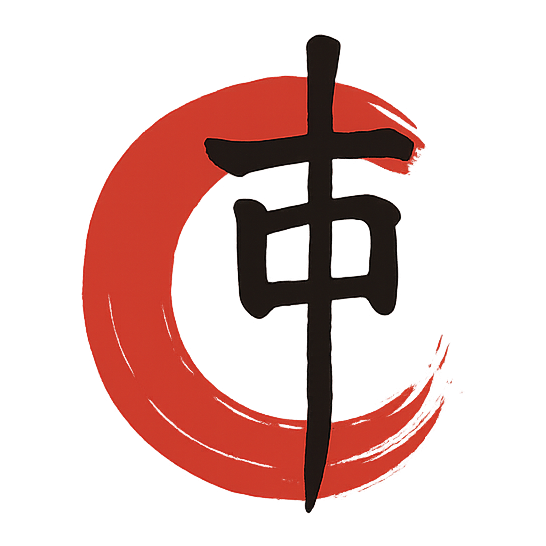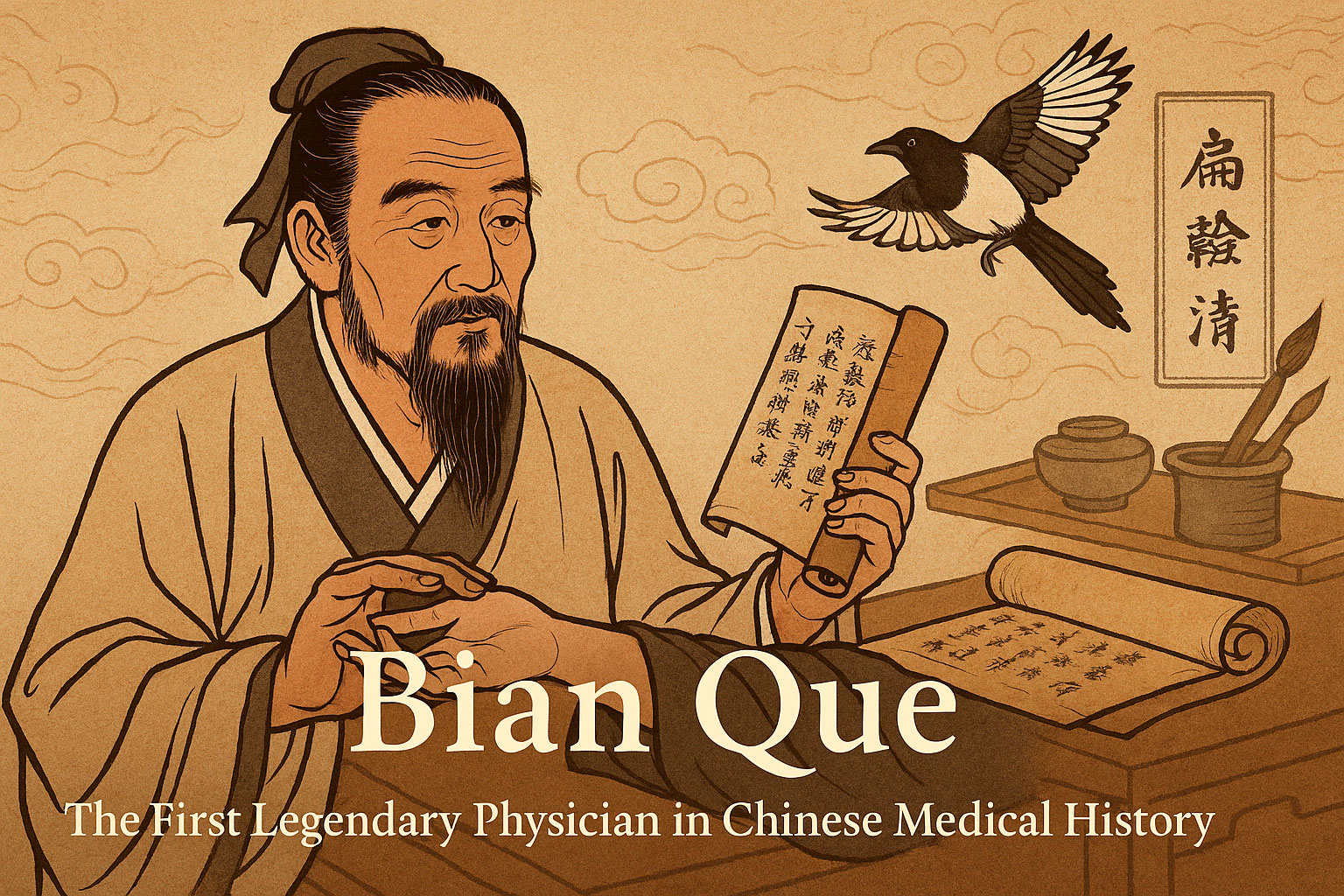When speaking of the origins of Traditional Chinese Medicine (TCM), Bian Que (扁鹊) is a name that resonates with legend, wisdom, and clinical brilliance. Often regarded as the first historical physician of China, Bian Que is credited with pioneering diagnostic techniques, developing early medical ethics, and setting the standard for clinical acumen in Chinese medicine.
His stories are found in texts as early as the Zuo Zhuan, Records of the Grand Historian (Shiji), and later in medical canons. Though myth and reality intertwine, his symbolic importance is indisputable.
🔶 Who Was Bian Que?
- Real name: Qin Yueren (秦越人)
- Era: Spring and Autumn or Warring States period (approx. 5th–4th century BCE)
- Title “Bian Que”: An honorific, referencing a mythical bird of healing
Bian Que was known for his miraculous diagnoses, sharp observations, and ability to “see through the skin” — earning him a reputation as a divine physician.
🔶 Core Contributions to Chinese Medicine
1. Master of the Four Diagnostic Methods (四诊合参)
“望、闻、问、切” — Looking, Listening/Smelling, Asking, Palpating
These methods form the foundation of TCM diagnosis, and Bian Que is said to be their originator or early systematizer. He could diagnose illness before symptoms arose, echoing the principle of “treating before disease manifests (治未病)”.
2. Pulse Diagnosis Pioneer
In the Shiji, Bian Que is described using pulse diagnosis (切脉) with great skill. He assessed the balance of Yin and Yang, the condition of internal organs, and disease progression just by touching the wrist.
3. Clinical Insight and Pattern Recognition
One famous story tells of Bian Que diagnosing a patient with illness in its earliest stage, long before visible signs appeared. He warned the patient four times as the disease progressed — finally becoming incurable when ignored.
🗣 Moral: The best physician sees illness before it takes shape, just as the best ruler quells rebellion before it starts.
4. Surgical Precursor?
Some legends say Bian Que performed early anesthesia and internal surgery, using wine and herbal numbing agents — though this remains more symbolic than confirmed history.
🔶 Famous Anecdotes
📖 The Four-Stage Diagnosis (From Shiji)
- At each stage, Bian Que warned the king of Qi that disease had entered deeper: skin → blood → organs → marrow
- The king ignored the early signs; when symptoms became obvious, it was too late to treat
This story reflects TCM’s focus on early intervention and preventative insight.
📖 Reviving the Crown Prince
- Bian Que diagnosed the crown prince of Guo, believed dead, as merely comatose
- After acupuncture and herbs, the prince revived — enhancing Bian Que’s legendary status as a “medical immortal”
🔶 Cultural Legacy
- Statues of Bian Que adorn medical academies, hospitals, and temples across China
- Revered as the patron saint of diagnostics
- Many TCM diagnostic texts trace their theoretical origin to his teachings
Bian Que represents the ideal of the physician as scholar, seer, and servant of life.
🔶 Conclusion
Though history may have mythologized him, Bian Que’s legacy lives on in every TCM practitioner who listens carefully, observes deeply, and seeks to understand the root of imbalance. His name stands not just for healing, but for insight, prevention, and the art of knowing the human body with clarity and compassion.
In honoring Bian Que, we honor the clinical spirit of TCM — rooted in observation, sharpened by intuition, and guided by virtue.


发表回复